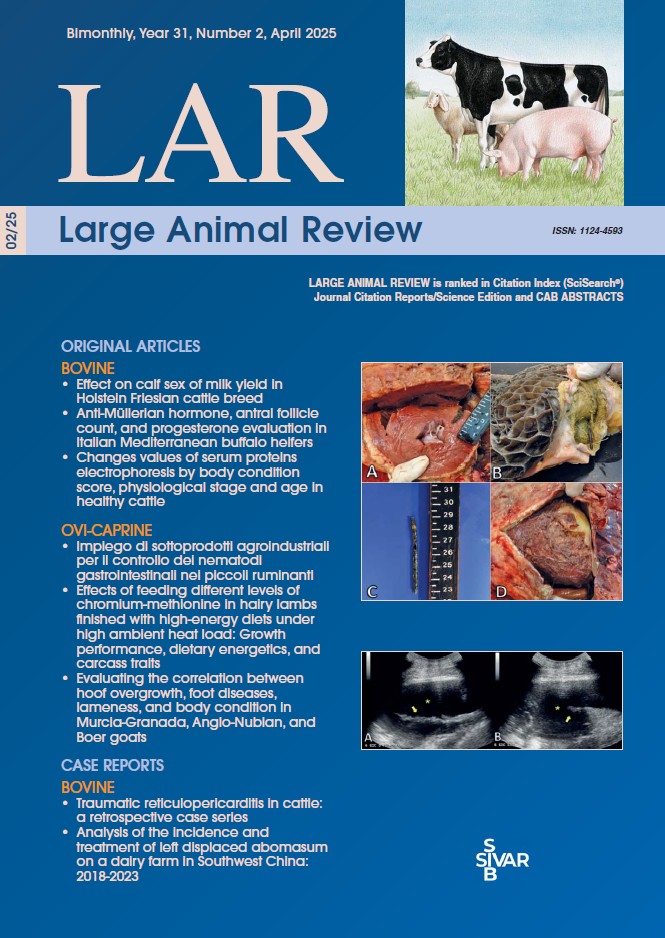Impiego di sottoprodotti agroindustriali per il controllo dei nematodi gastrointestinali nei piccoli ruminanti
Abstract
The use of agro-industrial by-products with potential anthelmintic activity, alone or in combination with a rational use of anthelmintic drugs, might be an alternative strategy to control gastrointestinal nematodes (GIN) and consequently to fight anthelmintic resistance (AR). In this scenario, the use of natural products with anthelminthic activity becomes a strategic resource for farmers who need to maximize their production. In fact, helminth infestations cause production losses of several million euros in the small ruminant sector. Natural anthelmintics, if effective, are products with no withdrawal time, with little or no side effects and that do not give rise to resistance or environmental pollution as happens with anthelmintic drugs that release residues into the environment. The field of natural anthelmintics derived from by-products, however, is vast and complex, and is often treated without taking into account the possible side effects of the products administered (even if minimal), the difficulties of processing and storage, and a series of logistical problems that could make these products unsuitable for use in the field. By analyzing in vitro and in vivo studies, this review aims to critically investigate the most concrete perspectives related to the use of the most commonly used agro-food by-products that have anthelmintic potential, in Europe and the Mediterranean basin.


